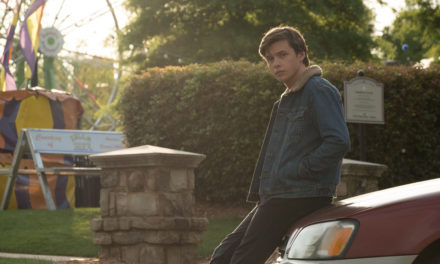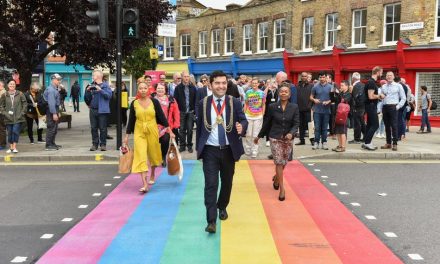“What’s with you gays and your rainbow flag?” my friend jokingly asked glancing at some recent photos I took at an Equal Love rally.
“Um… It’s…”
Then it dawned on me, I didn’t quite know. When I thought about it, yes I have been one of those to wave a rainbow flag at a protest and even wear a sticker. I heard that it symbolised the diversity of the the LGBT community, but a part of me was sure there must have been more then just that.
Wherever there are large amounts of the LGBT community congregating, you’ll more then likely see the rainbow flag. God, I’ve even seen stickers on cars, and someone even went as far to stick the rainbow colours on the Newfarm sign as you leave Fortitude Valley.
The rainbow flag has become the international symbol for the LGBT community. So sitting in front of my friend feeling somewhat lost for words I knew what I had to do. I turned to Google…
Back in the day, before the time of the rainbow flag, the most recognised gay and lesbian symbol was that of the pink triangle. The symbol originated in Nazi concentration camps during World War II as a way to classify one convicted for sexual deviancy which included homosexuality.
Even though the icon was later reclaimed by many in the post-Stonewall gay rights movement, as a symbol of empowerment and remembrance. But not everyone felt comfortable with the symbol due to its tragic history.
So a new symbol was created to help symbolise gay pride. But as it turns out, the rainbow flag wasn’t always a gay salute. Throughout history, the flag was displayed in many cultures around the world as a sign of diversity, inclusiveness, and hope.
The world’s best-known version of the rainbow flag, often referred to as “the freedom flag” was appropriated as a symbol for gay pride and diversity back in 1978 by San Francisco artist Gilbert Baker. Baker’s original, self-made flag was composed of eight stripes, hot pink (for sexuality), red (for life), orange (for healing), yellow (for sunlight), green (for nature), blue (for art), indigo (for harmony) and violet (for the human spirit).
When Baker originally attempted to commercially produce the flag, the hot pink, back in those days,wasn’t readily available. So the flag was reduced to just seven colours.
The following year however saw yet another change in the flag. For a parade in protest of the assassination of Harvey Milk, the rainbow was changed to show only six colours (dropping the indigo stripe), so that it could be split in half and evenly line two sides of the street while the parade marched through.
After looking up the history of the flag with my friend, I now know that next time I’m waving my rainbow, I can have a true sense of pride in knowing the symbolism behind it.
“Here I was thinking gays just liked pretty colours,” my friend added at the end of our educational endeavour.
Needless to say I gave her a friendly slap across the back of the head for stereotyping!










Facebook Comments